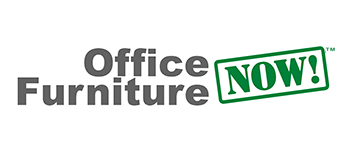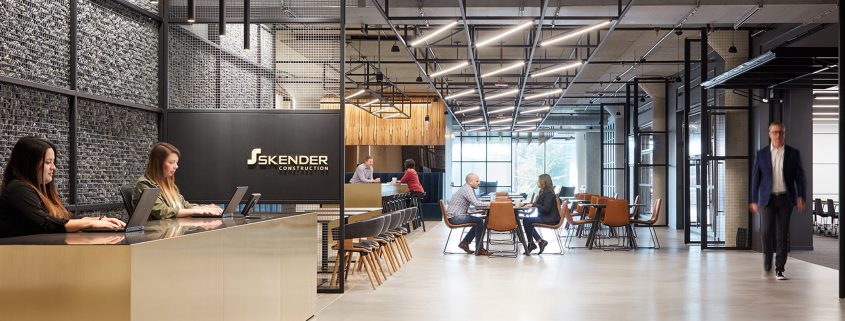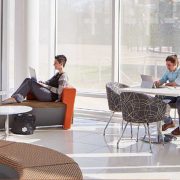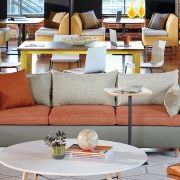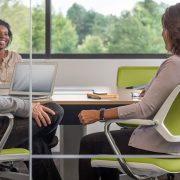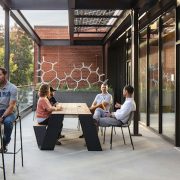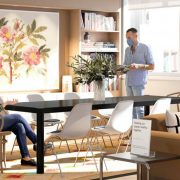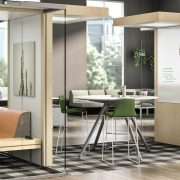Creating A Branded Environment
Creating a branded environment in your office is more than just chairs, desks and technology. It’s about engagement and storytelling. Building your story through environmental design woven into the workplace creates a unique user experience for your staff and your clients. Brand immersion is a strategy that fosters morale, productivity, and a deeper commitment through engagement.
If you are in the retail industry, you probably know a lot about how branding sells your product. But when it comes to branding your company, there’s a little more to that story. And it all starts with great design. Today, office design is pivotal in the hiring and retention process. You used to only see a brand represented in one place around the office, and that would be your logo on signage. But thanks to corporate brand leaders like Apple, it has become more than just recognition. It has become an immersion experience.
Creating a branded environment generates engagement. Recent studies have found that only 30% of employees are engaged and inspired by their workplace. In addition to this, it is clear that different people require different things to engage and keep them engaged. Add to this evidence some global findings from the Leesman Index (2014):
- The design of the workplace is important to 84% of office workers
- Of those who say creativity is important to their work, only 23% feel that it’s supported within the office environment
So office design plays a significant role in perception. Building your brand from the inside out is where this story begins.
WHERE DO YOU START?
Within the intricate space planning and design process, applying a brand story can take on many forms. Here are two simple questions to get you started:
1) What do you want to tell people about your company?
2) What do you want to highlight within your workspace that tells that story?
Typically in commercial interior design, the emphasis is placed on highlighting product, signage or customer service areas. It comes down to how your team works within your business dynamic. For instance, you’ll most likely need open and closed spaces for collaboration and dedicated meeting spaces. Impressionable spaces that greet clients can create a lot of brand impact.
The first impression clients and potential employees have about you is your reception area. This is the perfect place where creating a branded environment can initiate drama and intrigue encourage engagement through curiosity and leave a lasting first impression. A focus on brand message here is very important. Your brand is what makes you unique and differentiates you from the competition.
As mentioned earlier, there are many companies that sell computers, but none can compare to Apple when it comes to an effective brand strategy; and that’s an understatement. Apple’s sleek design, simple and minimal material palette, intelligent and attractive packaging, and clean looking website contribute to a popular brand that is known by anyone who hasn’t been living underground for the last ten years.
Take a look at their design acumen and see how it speaks to what consumers want to know about Apple. Then apply that to your branded environment design strategy:
- What makes your brand or service unique?
- What do you want to emphasize about your company?
- What colors and elements best represent your story?
The next phase of the design process will define focal points and create brand guideposts around your office that weave the storyline throughout the workspace in a cohesive manner. When creating a branded environment, this is accomplished through emphasis and strategic placement. Your focal points may be reception, meeting areas or departmental differentiation emboldened by your brand colors.
Where and when you create those focal areas becomes significant. For example, in a linear space, such as a hallway, the wall space at the very end of the corridor is your best feature area. The center would have the most impact, so think bold artwork or your vision/mission values applied to the wall with lettering or signage.
You could also create a focal point by interrupting the regularity of cubicles or benching workstations with juxtaposing colorful seating areas. If you have an architectural feature that cannot be altered within your workspace, like a stairwell, turn it into a showpiece with brand colored railings or unique surface treatment that incorporates targeted messaging. Add wood and a water feature to create a unique greenspace filled with living plants that detract from the utilitarian nature of the stairs.
THE BRANDING ETHOS
Collaboration is important in this process. Your team should have valuable input. What you are doing is working towards creating brand impact within your office design. So create some internal dialog. Collaborate with your team on strong messaging that showcases your business objectives, supported by highly functional workplace culture. Create a well planned physical space that has intention behind it for productivity and collaboration by using these guidelines:
Work Closely with Your Marketing Department: When planning your office branding project, it’s vital that your marketing department is represented within the discussion. Nobody understands your current brand identity and branding strategy better than your marketers and they may also have opinions on whether changes need to be made to adapt to new challenges or existing failings. A sensible starting point is to review your organization’s mission statement. The stress of day-to-day operations can make it easy to lose sight of core principles, values, and goals. Re-familiarizing yourself with the mission statement can also be a huge help when it comes to dealing with external design teams.
Synchronize Internal and External Branding: It is vital that your internal and external branding is in sync. If your branding strategy is going to generate trust, it has to be consistent and believable. This means that there can be no mixed messages, no room for confusion and the messages being sent through branding need to match up with the experiences of your employees. When internal and external communications are mismatched, it underminds employees’ perceptions of the company’s integrity. Being told one thing by management and observing a different message being sent to the public is just bad business.
Place a Strong Focus on the Reception Area: In client-facing workspaces, the single most important area for branding is reception. In most offices, this will be the first point of contact for visitors. It will also be the place in which a first impression is formed. Research shows that it takes just seconds for customers to make a judgment call here. Your business’s name and logo should be clearly visible and it may be sensible to include a slogan that sums up your attitude. Moreover, the reception should be decorated in a way that matches up to the brand colors you use for external marketing. Although customers should be impressed by what they see, they should not be surprised or overwhelmed.
Target Employees at Key Work Touch-Points: When it comes to aiming your branding at employees, it is important not to go overboard. Instead, your branding efforts should be focused on key workplace touch-points. One way to do this is to have on-brand messages in specific areas. A message about togetherness is ideal for the walls of a collaborative space, for example. Motivational on-brand messages in breakroom areas can also create cohesiveness in your brand story.
SUMMARY
Creating a branded environment means planning workspaces that are highly functional with brand intention behind the design. All departments should be equally represented in the brand story so no one is an afterthought. People and space are both valuable resources and the two are intertwined. The physical environment, on or off-site, connects with us at a subconscious level – whether positively or negatively – through targeted brand messaging. Putting some thought behind the messaging within the design will go miles toward engaging everyone with a highly functional and successful branded environment.
Logos, mission statements and company ideals are only a few of the elements that parle into a cohesive brand strategy. All of these elements should be considered in the design of your workplace. When you extend your branding message into your interior commercial space, it helps your clients and customers gain a deeper understanding of who you are and what makes you unique. As Urban Jungle so aptly stated:
“Your brand lives in the real world. When your customers and staff encounter it in their daily lives, your environment affects their thoughts and emotions—which, in turn, influence their behavior.”
 MEET TERESA ALVAREZ: Teresa is an office furniture specialist who can help your workspace become more in touch with your branding ideals. With 12 years of experience in the office interiors and office supply business, she can help you find creative solutions for your branded office design. Contact her via email at teresa@officefurniturenow.com or give her a call at 888-910-3769 x139.
MEET TERESA ALVAREZ: Teresa is an office furniture specialist who can help your workspace become more in touch with your branding ideals. With 12 years of experience in the office interiors and office supply business, she can help you find creative solutions for your branded office design. Contact her via email at teresa@officefurniturenow.com or give her a call at 888-910-3769 x139.
